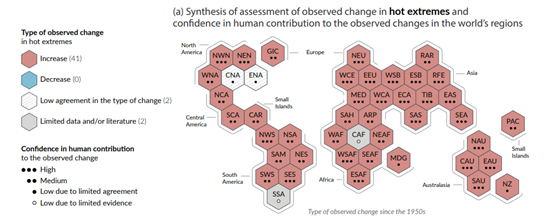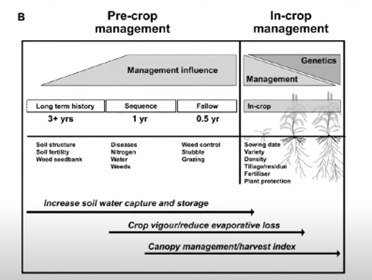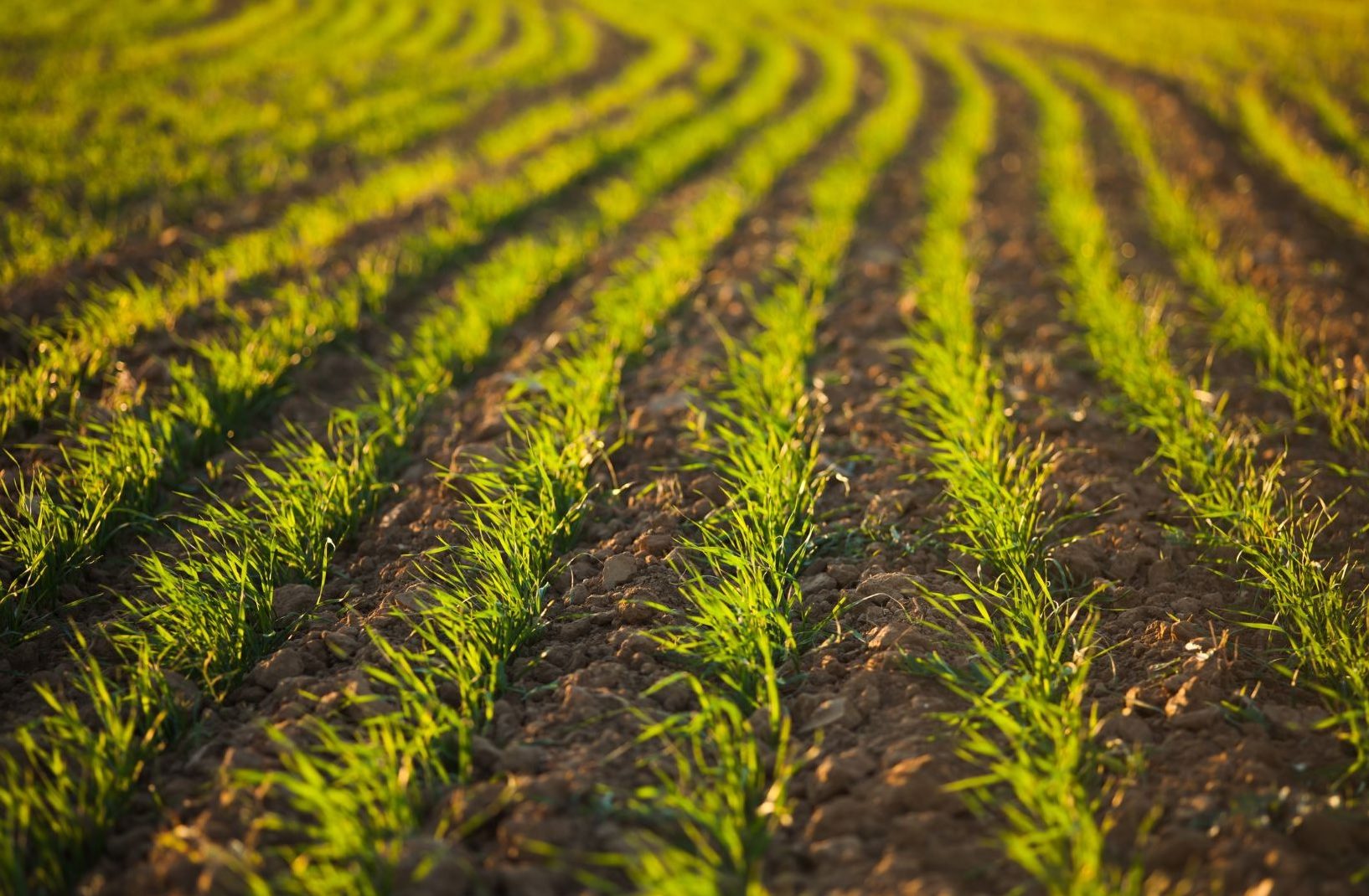Developing new agents for climate-smart agriculture
What is Climate-smart Agriculture?
Climate-smart agriculture is a new approach aiming to confront-limit the effects of climate change in the agricultural sector by adopting new strategies, agents, and tools. The goal is to increase crop productivity (creation and use of new resistant-tolerant crop varieties, fine tunning of specific cultivation practices, etc), make adjustments to make a cultivation system more resilient to climate change, and decrease or even remove greenhouse gas emissions.
Exploring the Intersection of Genetics, Climate Change, and Agriculture (climate-smart agriculture)
In this contribution, we discuss the impact of the introduction of new genetics and technology to agriculture, particularly in the context of climate change and the requirement for enhanced sustainability. We are now clear in our minds that genetic ‘solutions’ do not deliver everything everywhere, but this should not always be seen as a problem. There are opportunities for a revolution in agriculture, for example, via the exploitation of exciting increases in our understanding of the genetics behind crop growth and productivity. Developments of this kind are given high priority in the media, but these reports do not always tell the complete story. For example, claims that ‘this kind of advance doesn’t work in such and such an environment,’ a conclusion often based on the variation between test plots in different environments. In reality, this is exactly what we would expect from experimental replicates in different environments that may be managed differently. As plant scientists, we understand many of the reasons behind this variation, which rather than being a problem, provides us with extra information to optimise the exploitation of our new science. We discuss here the importance of understanding the effect on yield (or indeed other physiological or morphological properties) arising from the interaction between Genetics (G) x Environment (E) x Management (M).
The Challenges
The last intergovernmental climate change group report published the map that you can see below. This is a stylised map of the world. You can see the assessment of the severity of high temperatures in food and farming across continents and in some of the world’s most productive regions. The confidence in these observations is high with the severity of the changes indicated by the number of asterisks.
A similar analysis by IPCC and available in their recent publications (IPCC, shows the challenge of a range of climatic challenges, such as drought and heavy precipitation. Extreme weather events, such as significant amounts of rainfall for many days in sequence, are becoming increasingly common and are a substantial challenge for farmers. The overall conclusion from the work of the IPCC is that pretty well wherever farmers are in the world, the adoption of climate-smart agricultural techniques will be helpful. From a situation not many years ago where the emphasis in the development of farming systems was almost exclusively on the delivery of high yields, there is now increasing emphasis in most regions of the world on regenerative farming systems (sometimes referred to as conservation agriculture) where the emphasis is on more sustainable use of input resources such as water, nutrients and labour, improvement of soil quality and the encouragement of biodiversity. Most of these techniques are climate smart but also commonly reduce many of the damaging effects of agriculture on the environment. The food system diagram shown here (adapted from a presentation given by Tim Benton and available on the Food Systems Academy website shows that agriculture is not only influenced by the environment but also itself influences (and generally damages) the environment (note that the arrows are pointing in both directions). We need to act to reduce this environmental damage, and the management systems discussed here are helpful in this regard.
The agriculture industry is responsible for the consumption of a large proportion of the world’s potable water, very significant fertiliser use in some of our most fragile ecosystems, and perhaps most importantly, around 30% of Greenhouse Gas Emissions. Historically, agriculture has been much slower in decarbonizing the environment than most of the other areas of human activity that contribute to global warming. The UK Global Food Security GFS) group has recently highlighted the problem faced by society as it tries to address the recent substantial increases in food insecurity. As global food prices rise significantly, there are general calls for increased food production and thereby increased food availability, choice, and affordability for many. In the diagram below, UK GFS (taken from www.foodsecurity.ac.uk/publications/UK-food-system-scenarios-report.pdf) highlights potential conflicts between delivering on the Paris Agreements (climate mitigation) and delivering policies that will allow us to meet high-priority global sustainability goals (SDGs).
It is important to decide where different countries and societies are on the horizontal axis of the diagram (Food system focus -the potential conflict between climate mitigation and increased sustainability); the vertical axis (Connectivity) shows our connectivity to more globalized or more localized food systems. It is difficult to argue against the view that we can all benefit from more local food, but much prosperity depends on food trade, and changes in trading patterns will not be without their consequences. Many regions of the world where agricultural productivity is high (e.g., the UK) are nowhere near self-sufficient in food. Much of the reason for this is climatic limitations to growth during much of the year. Novel growing systems (e.g., vertical farming in controlled environments) can help regional self-sufficiency. Still, these systems can result in local environmental problems such as plastic pollution and soil contamination (see, e.g., Cusworth et al. 2022).
Using advances in cropping systems design and crop genetics to improve sustainable food production
We know more about the functioning of photosynthetic biology than is known about any other plant process, and we are learning more about root biology through novel imaging techniques and about water relations and plant metabolism from phenomics and metabolomics. Nowadays, we have access to incredible computing power, and we can transform plants much more quickly and easily than before. Computing power enables us to ask questions about systems: plant systems, crop systems, and food systems.
What are the things we might manipulate, and what are the likely impacts of this manipulation?
There is much interest in the possibility of manipulating and maximising the efficiency of water use by crops. Geneticists at CSIRO in Australia have illustrated how early vegetative vigour can be an advantage in wheat crops growing in water-scarce environments simply by more quickly covering the ground with leaves. This reduces unproductive water loss from drying soil surfaces.
More soil water is then available to go through the plant, where it contributes to plant productivity. Plants will lose a lot of that water through pores in the leaves (the stomata) which will close as the availability of water to the plant declines. This is an effective means of avoiding and at least delaying the development of damaging water deficits. However, plants need carbon to grow (after fixation by photosynthesis), and this carbon enters the plant through the stomata as atmospheric carbon dioxide. Soil water loss is wasteful. Covering the ground reduces this loss and makes more water available for exchange with carbon dioxide. This measure of increased water use efficiency (WUE) is expressed as carbon fixed or dry matter produced per unit of water available to the crop.
Another assessment of WUE is the amount of carbon fixed to dry matter (or grain) as a function of the amount of water lost by the leaves. This is well known to be a function of the sensitivity of the stomata to plant water deficit, with sensitive stomata (something that is genetically determined) delivering higher WUE. Scientists at Pioneer (and colleagues) have shown that the utility of this trait varies with the environment (Messina et al. 2015). Not surprisingly, historical maize yields in the United States are higher in the northeast of the country and lower in the west (where there is less water is generally available for the crop). Using a modeling approach to assess the impact of the introduction of a limited transpiration trait (drought-sensitive stomata) showed that this trait delivered positive effects on WUE and yield in the drier western states. The effect of the introduction of the same trait into crops growing in the south and the east of the US was to reduce yield, an example of a point that we made earlier – particular genetic manipulations may not deliver the same effect everywhere. Put another way, the end result of the introduction of new crop genotypes (G) (however they are produced) will be a function of the interaction between G and E (environment). In recent years, increasing temperatures and changing rainfall patterns in Australia have caused difficulties for farmers across the country producing wheat. Researchers at CSIRO in Canberra have shown that novel crop management (M) and new genetics (G) can be combined to sustain some yield in even the driest of environments. Kirkegaard and colleagues have expressed the impact of these influences on yield as:
Yield = G x E x M
Even management of the paddock before the crop is sown can significantly affect the wheat crop’s productivity! The following diagram, taken from Kirkegaard and Hunt (2010), illustrates the impact of different crop management practices on the factors contributing to crop yield.
Many Australian wheat farmers have struggled to survive in business and have even stopped farming because of the increasing frequency and severity of periods of hot, dry weather (as predicted by IPCC). Working with Greg Rebetzke’s crop improvement group at CSIRO, Kirkegaard has demonstrated the advantage of sowing the crop earlier in the season to generate deeper roots and access more water from the soil profile. In the diagram below (taken from Zhao et al., 2022), you can see how some genetics (on the left of the diagram) can interact with the plants’ developmental and physiological characteristics, ultimately determining grain yield (on the right of the diagram). Although there are clear advantages from early sowing to increase the plant’s access to stored soil water, early sowing can be risky as surface soil dries quickly. This can cause problems in the emergence and establishment of the seed. Deeper sowing can address the challenge of surface soil drying and give the plants access to stored subsoil moisture. Zhao et al. (2022) noted that a problem with modern wheat varieties is that coleoptiles are shorter than many older varieties. To address this issue and the resulting sensitivity of seedlings to soil surface drying, the multidisciplinary crop science research group at CSIRO has now produced wheat varieties with longer coleoptiles. The effects of this manipulation on grain yield in dry environments have been very positive, and calculations suggest that widespread uptake of these new varieties can significantly enhance national grain yield (see Zhao et al. 2022).
Although crop improvement is a complex process that can be time-consuming, many aspects of crop management are relatively simple manipulations that will address some of the same biology addressed above. For example, the addition of particular soil microbes (e.g., Belimov et al. 2009) and manipulation of irrigation practices can reduce irrigation water used (and reduce farmers’ costs) while maintaining (or without significantly restricting) yield, thereby increasing water use efficiency. A good example of using deficit irrigation (less than the water demanded by local environmental conditions) to sustain crop yield under drought is the application of alternate wetting and drying (AWD) irrigation to rice. Here, soil drying promotes plant senescence, and the transfer of assimilates from storage in the stem and leaf sheaths to the grains, thereby enhancing the harvest index (see, e.g., Yang and Zhang, 2006). The application of AWD irrigation is a virtually cost-free process and, as emphasised above, can reduce the use of large quantities of expensive irrigation water. It has been proposed that manipulations of this type can also reduce methane emissions from the rice crop, thereby helping to reduce some of the most damaging effects of agriculture on our planet.
This article has been created based on the author’s presentation at the webinar organized by Wikifarmer and GPC: Climate-Smart Agriculture.
References:
- Belimov A A, Dodd I C, Hontzeas N, Theobald J C, Safronova V I, Davies W J. (2009) Rhizosphere bacteria containing 1-aminocyclopropane-1-carboxylate deaminase increase yield of plants
grown in drying soil via both local and systemic hormone signalling. New Phytologist, 2009, 181(2): 413–423. https://doi.org/10.1111/j.1469-8137.2008.02657.x - Benton, T. G. Climate change and agriculture: adaptation and mitigation. Downloaded from http://www.foodsystemsacademy.org.uk/videos/Tim-Benton.html
- Cusworth, S. Davies, WJ. McAinsh, MR. and Stevens, CJ. (2022). Sustainable production of healthy, affordable food in the UK: the pros and cons of plasticulture. Food and Energy Security
http://doi.org/10.1002/fes3.404 Global Food Security (2021). The Role of the UK Food System in Meeting Global Agreements:
Potential Scenarios. Retrieved from www.foodsecurity.ac.uk/publications/UK-food-system-scenarios-report.pdf - IPCC. (2021). Summary for Policymakers. In: Climate Change 2021: The Physical Science Basis. Contribution of Working Group I to the Sixth Assessment Report of the Intergovernmental Panel on Climate Change. https://www.ipcc.ch/report/ar6/wg1/https://ciat.cgiar.org/the-changing-global-diet/
- Kirkegaard JA, Hunt JR. (2010) Increasing productivity by matching farming system management and genotype in water-limited environments. J Exp Bot. 61(15):4129-43. doi:
10.1093/jxb/erq245. Epub 2010 Aug 13. PMID: 20709725. - Messina, C.D., Sinclair, T.R., Hammer, G.L., Curan, D., Thompson, J., Oler, Z., Gho, C. and Cooper, M. (2015), Limited-Transpiration Trait May Increase Maize Drought Tolerance in the US Corn Belt. Agronomy Journal, 107: 1978-1986. https://doi.org/10.2134/agronj15.0016. https://www.ipcc.ch/report/ar6/wg1/downloads/report/IPCC_AR6_WGI_SPM.pdf
- Yang J, Zhang J. 2006. Grain filling of cereals under soil drying. New Phytologist 169, 223-236. (Tansley Review). 10.1111/j.1469-8137.2005.01597.x.
- Zhao, Z., Wang, E., Kirkegaard, J.A. et al. (2022) Novel wheat varieties facilitate deep sowing to beat the heat of changing climates. Nature Climate Change 12, 291–296 (2022). https://doi.org/10.1038/s41558-022-01305-9
- https://www.fao.org/climate-smart-agriculture/en/









































































